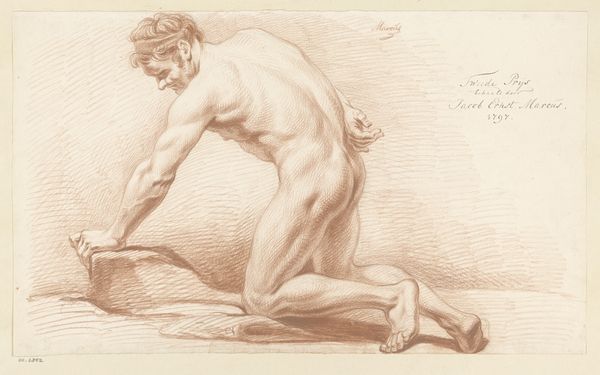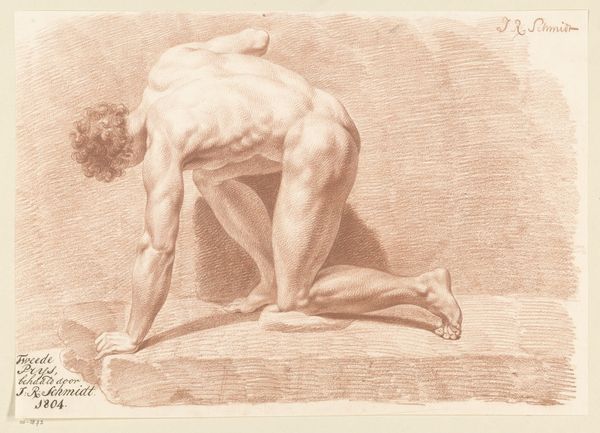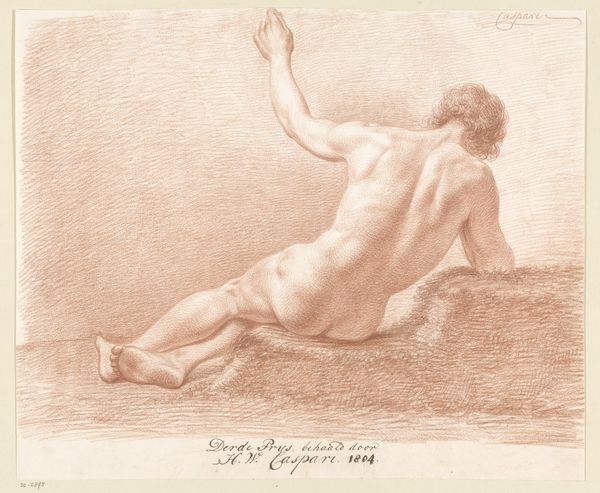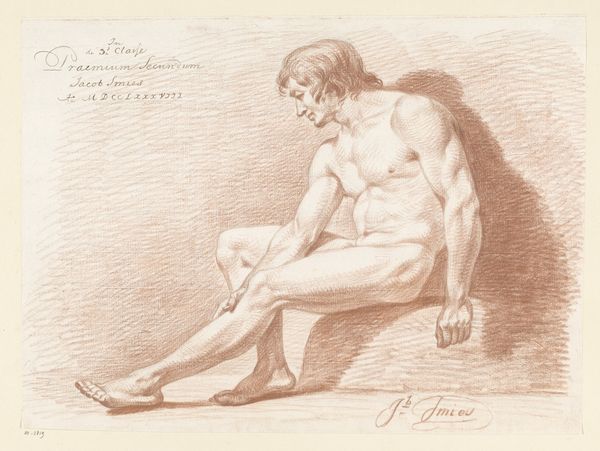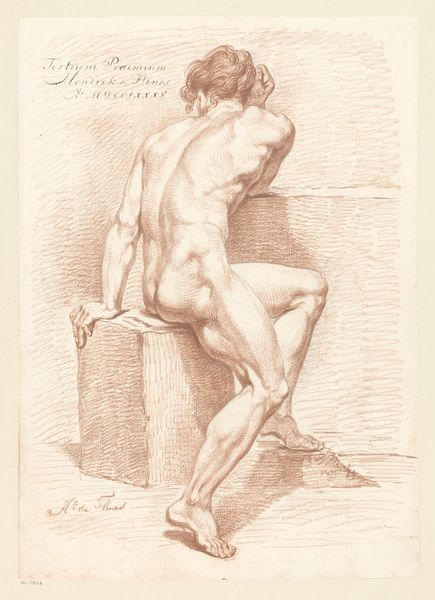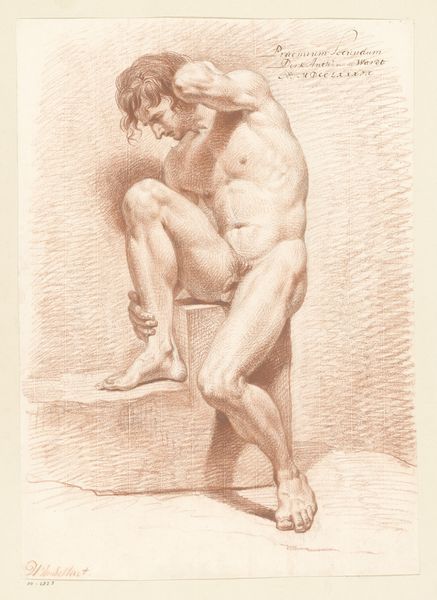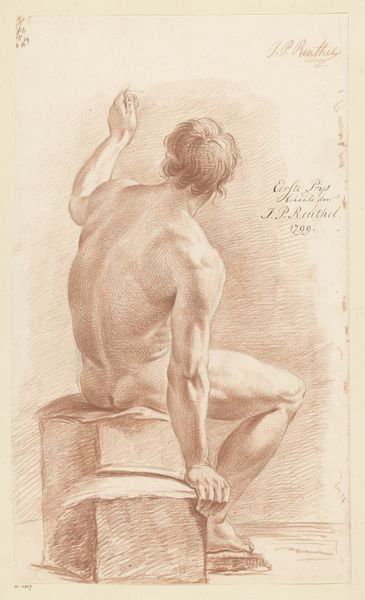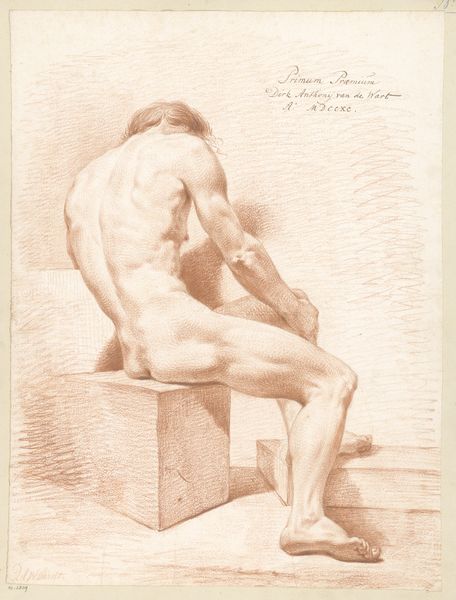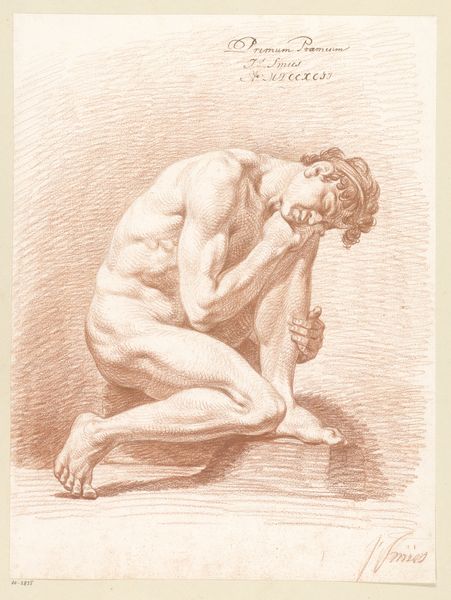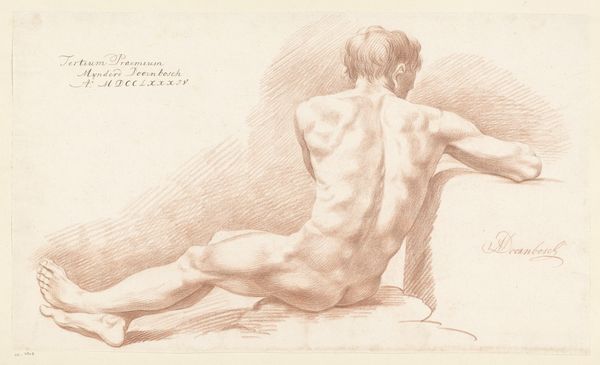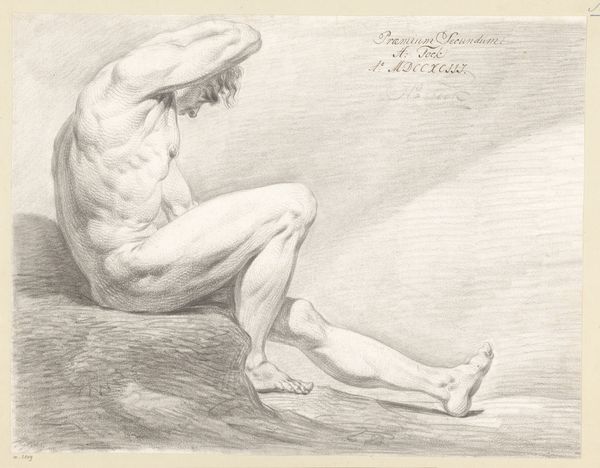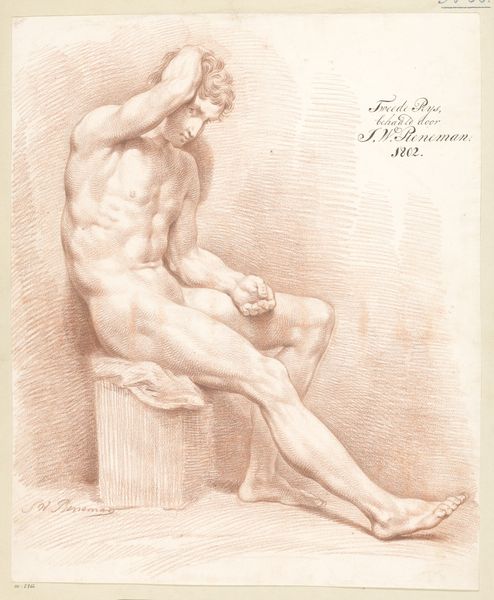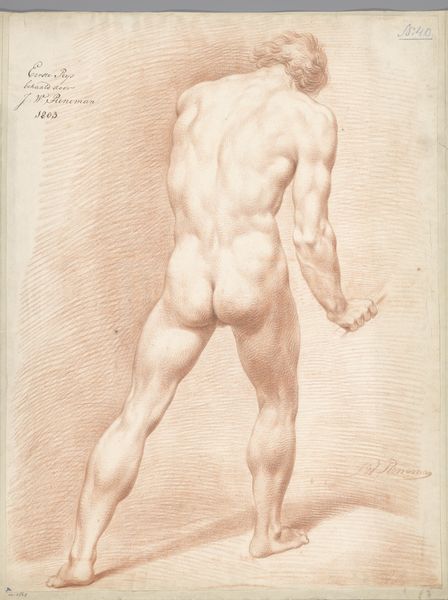
drawing, pen
#
portrait
#
drawing
#
classical-realism
#
figuration
#
pencil drawing
#
pen
#
portrait drawing
#
academic-art
#
nude
Dimensions: height 411 mm, width 488 mm
Copyright: Rijks Museum: Open Domain
Curator: This is a pen and pencil drawing entitled “Knielend mannelijk naakt, van opzij gezien,” or “Kneeling Male Nude, Seen from the Side.” It was produced by C. Courier, possibly between 1801 and 1825. What are your initial thoughts? Editor: Immediately, I'm struck by a feeling of vulnerability. The figure is presented in a pose that is both exposed and submissive, which prompts me to consider how masculinity is portrayed, or rather, constrained within classical artistic traditions. Curator: It's interesting you pick up on vulnerability. I see the careful detail given to the musculature, reflecting the Academic art style's fascination with ideal forms. Consider how the figure's form references ancient Greek sculpture, loaded with symbolic weight of beauty, strength, and often, virtue. Editor: That's precisely the point! The overt display of musculature as an "ideal form" obscures a more insidious narrative. The male gaze inherent in these portrayals historically objectifies the subject. How does this contribute to contemporary standards of beauty and gender performance? Curator: True, these nudes were often created within the framework of academic study. Note the precision of the anatomical rendering. It wasn't necessarily about exploitation, but rather an attempt to capture an elevated form and transmit a sort of heroic masculinity. Editor: But who defines that heroism? We must acknowledge the social dynamics present at the time this work was created. Consider the context of emerging bourgeois power, and anxieties around it – and how classicism offers an ideal for it to look to, especially to solidify notions of white masculine control in a period defined by upheavals like the French Revolution. Curator: That's a valid perspective to add, considering the rise of social awareness of inequity at the time. What is evoked through Courier's conscious attempt at this classical representation, which might also signal the anxieties of its time? Editor: Exactly! That kneeling pose—it's ripe for analysis! Is it supplication, servitude, or a momentary pause? How does it contrast with the presumed power projected through his muscular physique? Ultimately, for me, the image is testament to enduring questions around representation, power and cultural memory. Curator: Indeed, a drawing like this acts as a flashpoint for ongoing dialogues around aesthetics, gender, and historical narratives. It prompts us to consider who is represented and, perhaps more importantly, why.
Comments
No comments
Be the first to comment and join the conversation on the ultimate creative platform.
